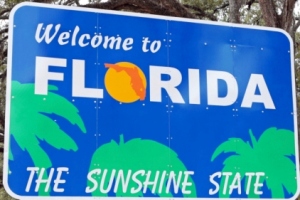 It may have year-round sunshine and play host to “the happiest place on earth,” but Florida’s dismal work-related fatality statistics reveal another side of the state.
It may have year-round sunshine and play host to “the happiest place on earth,” but Florida’s dismal work-related fatality statistics reveal another side of the state.
A recent report issued by Florida’s Department of Health, Occupational Health and Safety Program (OSHP) based on 2007 data (the most recent figures available), the state ranked third nationally for work-related fatalities. The 363 workers who died in Florida that year represented nearly one death per day.
Using figures from the Bureau of Labor Statistics (BLS) Census of Fatal Occupational Injuries (CFOI) and the BLS Current Population Survey, the OSHP found that the most common fatal incident types were those involving transportation accidents (38%), assaults and violent acts (19%—predominantly shootings), and falls (17%).
Workplace violence in Florida affects women, self-employed more
With workplace violence ranking as the second leading cause of death, OSHP said it intends to design “interventional and educational efforts” to bring those numbers down – particularly among the groups that are disproportionately affected by them: females and self-employed workers.
“Next steps for our program will include collaborating with stakeholders within Florida that are currently working with these high-risk groups: agriculture, forestry, fishing and hunting, administrative and waste services, and construction.”
Differences were seen between self-employed versus wage and salary workers. Among the self-employed, the most common incident type was assaults and violent acts (48%). Among wage and salary workers the leading incident type was transportation accidents (41%).
Males, Hispanics, older workers at higher risk
Work-related fatality rates also varied by race/ethnicity and sex. Overall, males had a higher rate of fatalities than females (7.0 vs. 0.7 per 100,000 workers). The distribution of incident type differed by sex; most notably a higher proportion of female workers were killed through assaults and violent acts than males (30% of female fatalities; 18% of male fatalities). Higher rates of work-related fatalities occurred among Hispanics (5.6 per 100,000 workers) and blacks (4.4 per 100,000 workers) than in whites (2.6 per 100,000 workers) and rates for these two race/ethnicities groups in Florida were also higher than national rates.
Fatality rate also varied by the age of the worker. Workers 65 years and older (7.2 per 100,000 workers) had the highest fatality rate per age group. For workers age 55 and older, the highest proportion and rate of fatalities fell in the transportation and warehousing industry. For workers aged 20–54, the highest proportion and rate of fatalities occurred in the administrative and waste services industry.
Specific occupations with high fatality rates were agricultural workers (49.6 per 100,000 employed), aircraft pilots/flight engineers (34.3 per 100,000 employed) and masons (31.0 per 100,000 employed). Specific industries with the highest fatality rate were agriculture, forestry, fishing and hunting (37.7 per 100,000), administrative and waste services (12.6 per 100,000), and construction (9.0 per 100,000). Highest fatality rates among whites and Hispanics were in the agriculture, forestry, fishing and hunting industry and the highest rate among blacks was in the administrative and waste services industry.


